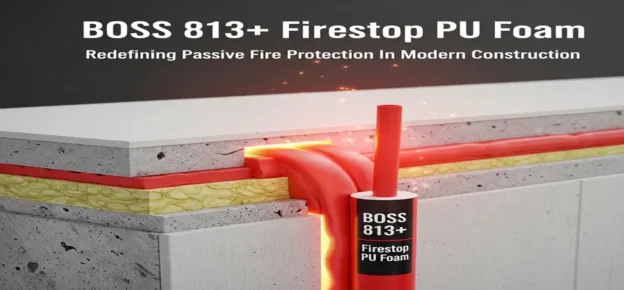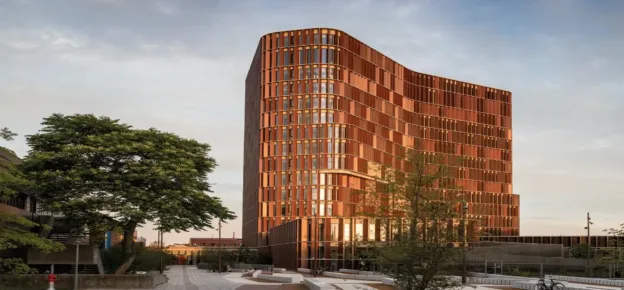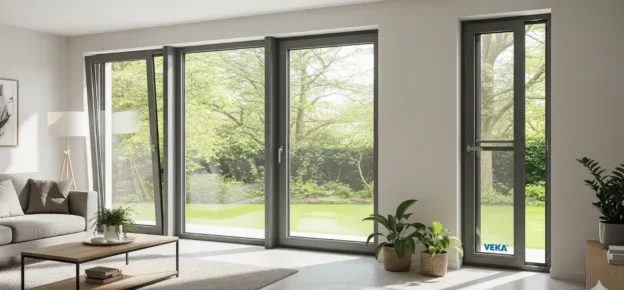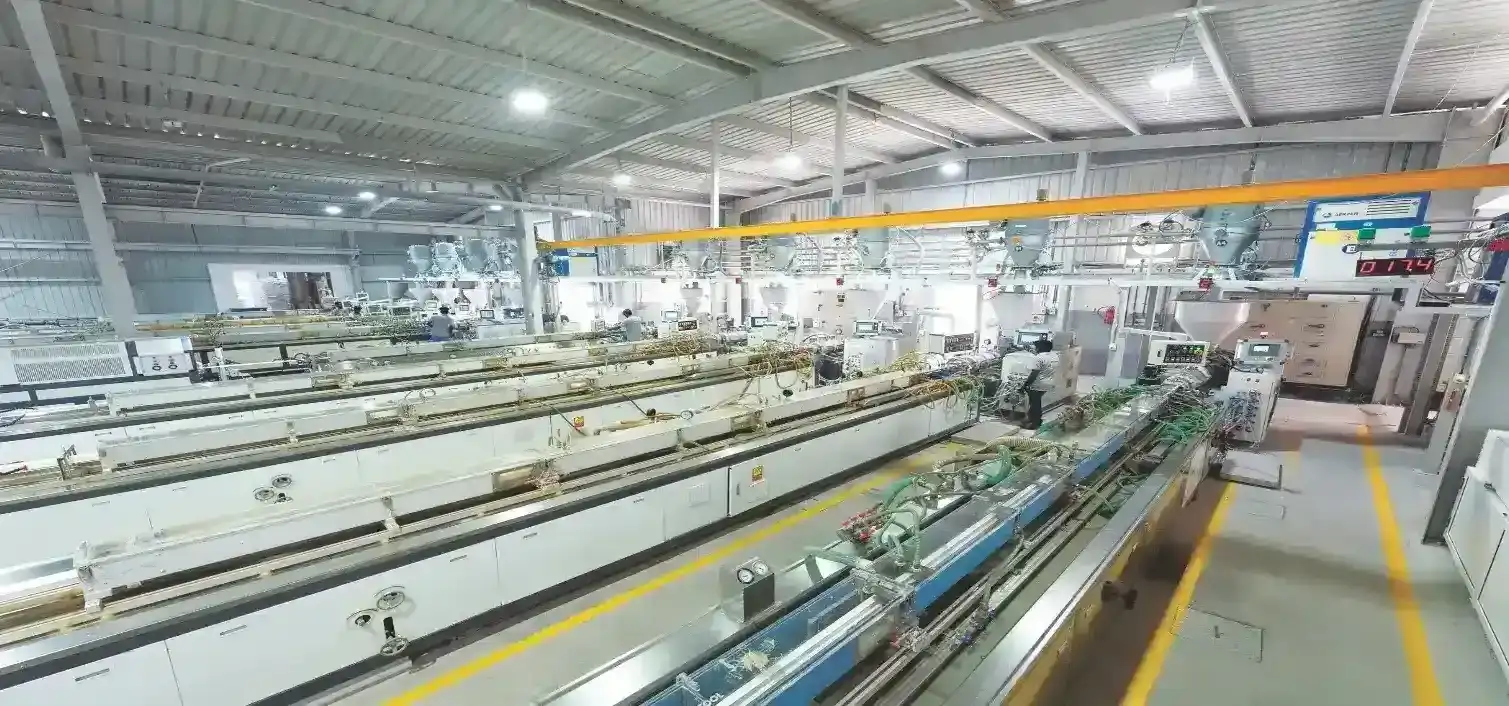The façade of a building is its first line of defence against environmental challenges, including wind, seismic activity, thermal fluctuations, and water infiltration. It serves not only as a protective shell but also as an integral part of a building’s aesthetic identity. In this cover story, we explore how top architects are addressing the evolving challenges of façade safety and performance. From selecting fire-resistant materials to ensuring thermal and acoustic insulation, these experts share their innovative strategies for designing façades that stand strong against the elements while enhancing the built environment’s functionality and visual appeal.

Façade Safety Amid Environmental Stressors
The structural safety of building façades under environmental stressors like wind, seismic activity, and temperature fluctuations is essential for durability and resilience. Here, top architects and designers share their approach to creating façades that are safe, stable, and visually compelling, balancing technical rigour with aesthetic values.

Ar. Rajkumar Kumawat, Founder and Principal Architect, Rajkumar Architects, emphasises that testing and structural analysis are critical to ensuring façade integrity under various environmental stresses. A façade must endure loads such as wind, live loads, seismic forces, and thermal expansion. Kumawat notes that collaborating with structural engineers is essential to confirm that the façade is both sturdy and stable, capable of withstanding its weight and any external forces. Additionally, material selection is vital for durability, particularly under high wind loads. He highlights the possibility of choosing sustainable materials without compromising safety, blending resilience with environmental responsibility.

In the evolving world of architectural design, façades serve as both protective shields and artistic expressions. Ar. Rinki Kotak, Principal Architect, 4th Dimension Architects and Interior Designers, believes that balancing these qualities with a focus on safety is essential. At 4th Dimension, Kotak describes their approach as one that transcends aesthetics to shape exteriors that are resilient and inspiring. “Our approach to façade design goes beyond aesthetics; we create protective exteriors that are as resilient as they are inspiring,” she says. Kotak explains that technical challenges in façade design are seen as opportunities to create building envelopes that not only safeguard interiors but also enhance the experience of the spaces within.

Ar. Sonali Bhagwati, Founder and Principal Architect, Designplus Architecture, underlines the importance of adhering to local building regulations to ensure safety in façade design. Safety, accessibility, and environmental requirements must be met, covering ventilation, structural integrity, and fire resistance. Bhagwati explains that planning for construction logistics, sequencing, and detailing can help streamline the building process and reduce waste. Moreover, selecting materials that withstand seismic forces and environmental loads is essential, adding resilience to the façade structure. For Bhagwati, safety in façade design begins with strict adherence to codes but extends to include materials and processes that improve overall structural integrity.

For Parth Parmar, Director, PARE Innovations Pvt. Ltd, façade safety involves addressing multiple environmental loads:
- Wind Loads: Higher buildings experience increased wind pressures, which demand strong anchorage systems and panel stiffness to prevent deflection or failure. Parmar recommends wind tunnel testing to verify the performance of façade panels, ensuring they can withstand anticipated wind pressures.
- Seismic Activity: In seismic zones, flexibility is key. Wall panels require flexible connections that allow movement during seismic events without causing damage. Parmar notes that selecting appropriate materials and designing panel attachments that dissipate seismic forces are crucial steps to avoid cracking or detachment.
- Thermal Expansion: Temperature changes cause wall panels to expand and contract, which can stress the façade if not managed. Parmar advises placing expansion joints strategically to accommodate these movements while choosing materials resilient to temperature variations.
Each factor is integral to ensuring that façades remain durable and safe over time, emphasising that design must address these challenges holistically.
“Structural Integrity Against Environmental ForcesThe first line of defence in façade design lies in its ability to withstand nature’s capricious moods. Wind, seismic activity, and thermal variations all conspire to test the limits of our structures. To this end, cutting-edge methodologies incorporate advanced computer modelling to simulate extreme conditions, ensuring every element—from structural support to cladding—works in harmony. Wind resistance is achieved through meticulous analysis of local patterns, informing the selection of materials and systems that can flex without failure. Seismic performance, crucial in tectonically active regions, relies on innovative connections allowing for movement while maintaining integrity. Thermal expansion, often overlooked but potentially devastating, is addressed through carefully placed expansion joints and materials selected for compatible thermal properties. The goal is a resilient façade system that maintains safety and performance across diverse environmental challenges, adhering to local building codes and international standards for structural integrity. Ar. Rinki Kotak, Principal Architect, 4th dimension architects and interior designers” |

Jasleen Kathpal, Architect and Urban Planner, Ajooni & Jasleen, highlights several key considerations for designing façades to withstand environmental loads. Durable materials like high-performance concrete and steel are crucial for handling thermal expansion. Structural load calculations, including simulations for wind, seismic, and thermal movements, optimise resilience. Wind load management ensures that loads are transferred from the façade to the structural frame to prevent failure. Kathpal emphasises the importance of flexible connections to absorb seismic movement and expansion joints to accommodate temperature changes, reducing the risk of cracking. High-strength fasteners in connection details further reinforce safety, while compliance with local building codes and engineering verifications completes the design process, ensuring that façades adhere to all safety standards.
Creating façades that are safe and resilient involves more than choosing materials or complying with codes. For architects, façade safety is a meticulous process that incorporates structural testing, collaboration with engineers, and attention to environmental loads.
By balancing aesthetic aspirations with rigorous safety measures, the architects craft façades that stand strong against environmental challenges while enhancing the built environment.
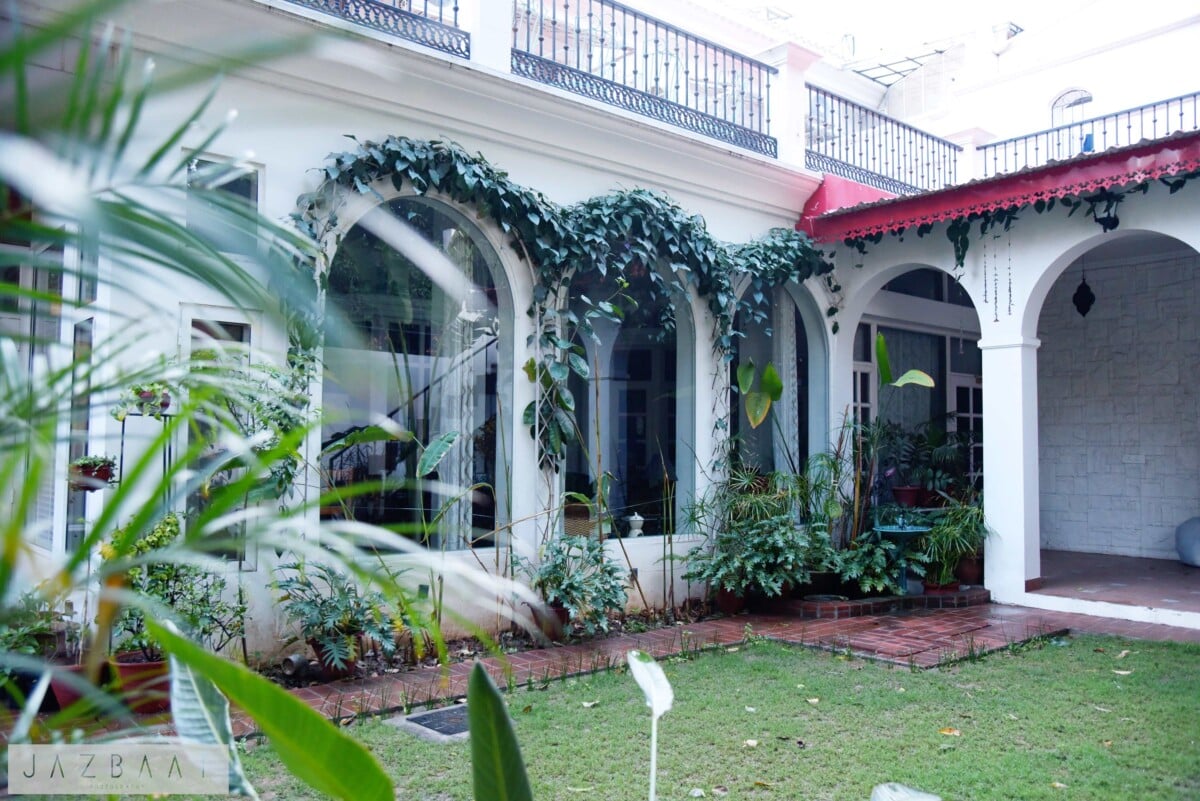
Fire Safety In Façade Design – Fire-Rated Materials And Compartmentalisation
Fire safety in façade systems is crucial for protecting buildings and their occupants from the devastating effects of fires. Incorporating fire-rated materials and strategic compartmentalisation not only meets stringent safety codes but also minimises fire spread across the building envelope. Leading architects share their approaches to designing façades that prioritise fire safety without compromising aesthetics.
Ar. Kumawat emphasises the importance of selecting non-combustible cladding and insulation materials that can withstand high temperatures. These fire-rated materials are essential in delaying fire propagation and preventing flames from penetrating the building envelope. Kumawat also highlights the role of compartmentalisation in enhancing safety by dividing the façade into distinct sections using fire-resistant barriers made of steel or concrete. This segmentation restricts the fire to specific areas, reducing the risk of structural damage and protecting occupants by containing the fire within isolated zones.
Ar. Kotak adopts a comprehensive strategy for fire safety in façade design. She underscores the meticulous selection of fire-rated materials, ensuring each component meets or exceeds local fire codes through rigorous testing. Kotak integrates compartmentalisation by placing fire-stopping barriers at floor levels and vertical intervals, creating isolated zones that significantly hinder fire spread. Additionally, she incorporates cavity barriers and intumescent strips within façade cavities to prevent chimney effects, while fire-resistant glazing and frames protect vulnerable areas. Kotak’s approach balances aesthetic appeal with high performance, seamlessly integrating active fire suppression systems to provide a holistic safety solution.
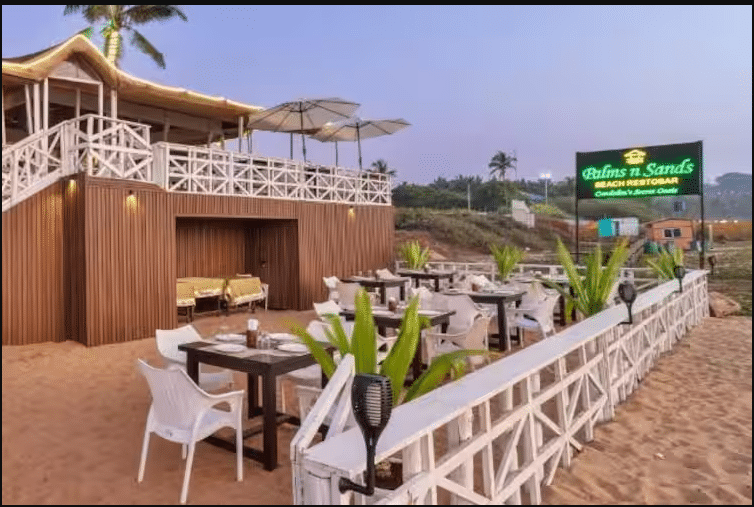
Ar. Bhagwat focuses on fire resistance testing and the integration of fire-rated components. She ensures that materials used in the façade system undergo fire resistance classification, indicating how long they can withstand fire exposure. Bhagwati includes fire-resistant elements such as flooring, fire-stopping systems, fire doors, and compartment walls to effectively halt fire progression. By selecting materials based on their ability to resist fire and slow its spread, she ensures comprehensive protection across the façade, enhancing the building’s overall fire resilience.
Parth Parmar advocates for a methodical approach combining material selection and compartmentalisation. He recommends using non-combustible or fire-rated wall panels, including specialised cladding, insulation, and glazing that comply with local fire safety standards. Parmar emphasises the importance of integrating vertical and horizontal fire stops between panels and sealing all joints and gaps with fire-resistant materials. These measures create effective compartments that contain fires within isolated sections, minimising external spread and ensuring adherence to safety regulations. Parmar’s strategies are essential for maintaining façade integrity and reducing fire risks.
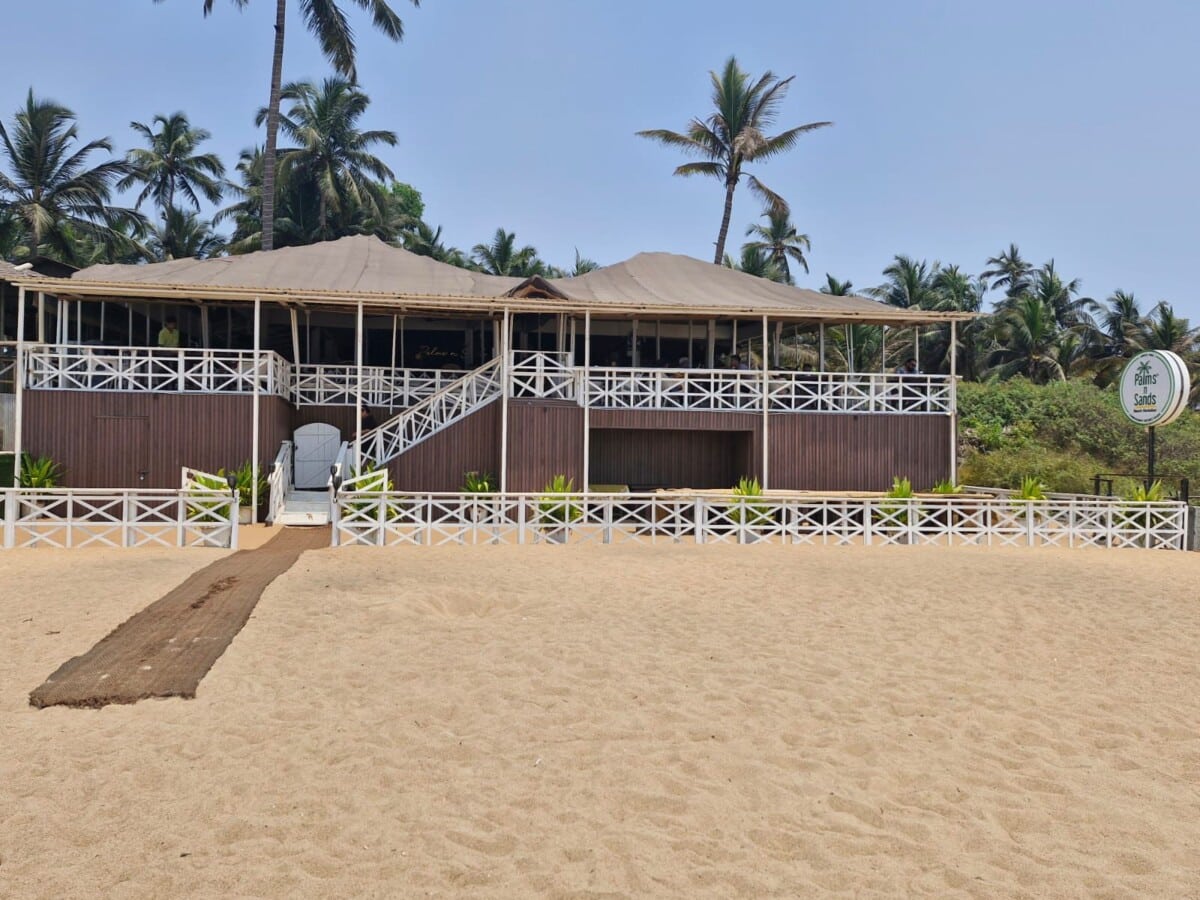
Jasleen Kathpal highlights several critical elements for designing fire-safe façades. She advocates for the use of non-combustible and fire-resistant materials, along with architectural setbacks and projections that act as natural barriers against fire exposure from neighbouring structures. Kathpal also incorporates ventilation and smoke control systems to safely release smoke, minimising its spread within the building. Compliance with local and international building codes is fundamental to her approach, ensuring that fire-rated façade components meet performance standards. Additionally, she integrates active fire protection systems such as sprinklers and utilises smart building management systems for real-time monitoring, coupled with regular assessments to maintain safety and compliance.
Architects demonstrate that effective façade fire safety requires a meticulous combination of fire-rated materials and strategic compartmentalisation. Their approaches ensure that façades not only meet safety standards but also protect building occupants and maintain structural integrity during fire events. By prioritising these elements, they create resilient building envelopes that safeguard lives and property while enhancing the architectural beauty of the built environment.

Preventing Water Infiltration In Façade Assemblies
Water infiltration is a critical issue in façade design, affecting both the aesthetic and structural integrity of buildings. To address this challenge, architects and experts adopt a combination of design strategies and material specifications that effectively manage water flow and ensure the longevity of the building.
Ar. Kumawat emphasises the importance of planning slope systems and outlets to prevent water penetration. He advocates for rain screens that create an air gap behind the cladding, which helps moisture escape and maintains the structure’s integrity. He also stresses the use of high-quality, flexible sealants for sealing joints to prevent water ingress at vulnerable points such as windows and corners. Waterproof membranes are applied behind the façade as a secondary barrier, while proper flashing installation around openings ensures further protection against leaks.
Ar. Kotak highlights the significance of pressure-equalised rain screen systems, which create air cavities behind cladding to neutralise the forces of wind-driven rain. These systems are complemented by redundant water barriers, such as multiple layers of water-resistant membranes and flashings, which work together to keep interiors dry. Proper joint design with overlapping details, gaskets, and high-performance sealants at panel interfaces is crucial. Kotak also stresses the importance of clear drainage pathways, like weep holes and drainage mats, to channel water away from the building envelope effectively. Climate-specific detailing and full-scale mock-ups are essential to ensure that the design performs well under local conditions.
Ar. Bhagwati discusses the need for selecting appropriate wall typologies, such as barrier walls or rain screens, to prevent water seepage. She notes the role of water-repellent materials in creating a drainage plane behind the cladding. These materials are connected with flashings, window openings, and penetrations to ensure that any external water is efficiently drained away. Bhagwati emphasises the importance of integrating drainage planes into the façade design to create a robust water management system.
Ar. Parmar underscores the role of water-resistant materials and coatings in preventing moisture penetration. He also highlights the importance of incorporating sloped surfaces, weep holes, and drainage channels within the façade assembly. These design strategies ensure that water is directed away from the building, minimising the risk of water damage.
Ar. Kathpal shares additional strategies for preventing water infiltration. She recommends using treated wood and other water-resistant materials for durability. Sloped surfaces on ledges, sills, and balconies help prevent water pooling, while internal drainage systems with jalli covers efficiently route water to the exterior. Kathpal also emphasises the importance of ventilation openings within the façade cavity to promote moisture evaporation. Self-cleaning materials and water-repellent coatings improve resistance to water penetration and reduce maintenance. Furthermore, ensuring compliance with local building codes related to moisture control is essential for long-term façade performance.
Preventing water infiltration in façade assemblies requires a combination of effective design strategies, such as sloped surfaces, rain screens, and waterproof membranes, as well as the use of high-performance materials and coatings. Proper drainage systems, ventilation, and adherence to local building codes ensure that façades remain durable and resistant to water-related issues, safeguarding the building’s integrity for years to come.
Thermal And Acoustic Insulation In Façade Systems: Balancing Performance And Compliance
Achieving the necessary thermal and acoustic insulation in façade systems while ensuring safety and compliance with local building regulations is crucial for creating energy-efficient, comfortable, and safe buildings. Experts from the field highlight various strategies and materials to accomplish this balance.
Ar. Kumawat emphasises the importance of gaskets in achieving insulation. These gaskets serve as thermal breaks and assist with acoustic isolation, placed between pressure bars and mullions. Careful design ensures the gaskets remain continuous at both horizontal and vertical transitions. Additionally, gaskets cushion the glass’s outer and inner faces, which helps in maintaining optimal temperatures within the building and preventing heat loss.
Ar. Kotak highlights the role of high-performance materials such as aerogels or vacuum-insulated panels, which offer maximum R-value with minimal thickness. Thermal breaks within structural components reduce heat transfer, enhancing overall energy efficiency. To address acoustic concerns, laminated glass and multi-layer façade assemblies are used to dampen sound transmission. Double-skin façades optimise air spaces, benefiting both thermal and acoustic performance. Kotak also underscores the importance of advanced modelling software in fine-tuning these systems to comply with local building regulations while maximising efficiency.
Ar. Bhagwati discusses the use of polyurethane as an insulating material. Polyurethane, known for its excellent thermal and acoustic properties, is easy to install and effective in spaces with complex geometries. Bhagwati also points out the advantages of ventilated façades, which incorporate an insulation layer and a metal frame that supports a protective sheet. The gap between the insulation and the sheet allows convectional airflow, helping to reduce heat bridging and protect the façade from environmental elements like wind and rain.
Parmar stresses the importance of selecting high-performance insulation materials that offer effective thermal and acoustic barriers. He also emphasises compliance with local building regulations, ensuring that the façade systems contribute to energy efficiency and comfort while adhering to energy codes and acoustic performance standards.
Ar. Kathpal shares insights into window systems with triple-glazed or laminated glass featuring low-E coatings to enhance thermal and acoustic performance. She advocates for using load-bearing elements like steel or reinforced concrete frames to support insulation layers, ensuring structural integrity. Kathpal also highlights the need for fire-rated materials and proper emergency design to meet fire safety regulations. To ensure compliance with local standards, she recommends engaging certified testing agencies for third-party verification of insulation performance.
Achieving effective thermal and acoustic insulation in façades involves a combination of high-performance materials, advanced design strategies, and compliance with local building regulations. These measures not only enhance comfort and energy efficiency but also ensure the safety and long-term performance of the building.
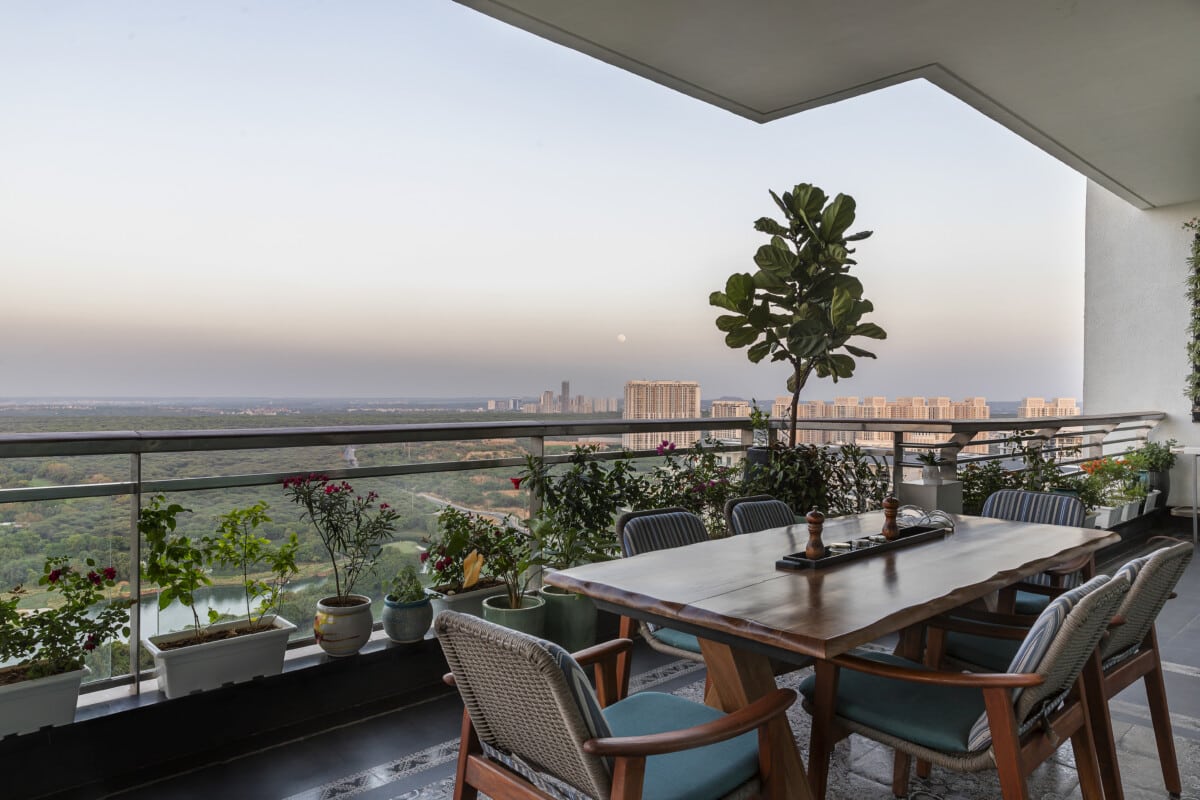
Safety Provisions For Façade Maintenance In High-Rise Buildings
Ensuring safe access for routine maintenance and inspection of façade systems, particularly for high-rise buildings, is a vital consideration in architectural design. Expert architects and engineers highlight several essential provisions to maintain safety while protecting the structural integrity and aesthetics of the façade.
Ar. Kumawat, emphasises the integration of discreet yet highly effective anchorage systems for Building Maintenance Units (BMUs). These systems ensure secure access to the exterior surfaces and are designed to meet international safety standards, providing reliable access during operation. Additionally, the strategic placement of access points and walkways allows technicians to carry out necessary repairs and inspections without compromising safety. These provisions are essential for high-rise buildings where safe access to the façade is paramount for both routine maintenance and emergency situations.
Ar. Kotak points out that high-rise building designs incorporate building management systems (BMS), which include roof-mounted cradles and tracks for exterior access. Anchor points are strategically placed to provide secure tie-offs for safety harnesses and other equipment. Internal access panels are also considered in the design, allowing for maintenance from within the building to reduce the need for external work at height. For ongoing safety, permanent walkways and catwalks are incorporated behind façade elements, ensuring safe movement during inspections and repairs. Kotak also advocates for using low-maintenance, durable materials to minimise the frequency of upkeep and for the inclusion of smart monitoring systems that provide remote assessment of façade conditions, thus reducing manual inspections.
Ar. Kotak believes that “beauty and safety are not mutually exclusive,” a philosophy reflected in the designs at 4th Dimension Architects. Their approach ensures that façade systems are not only visually appealing but also structurally resilient and safe for long-term use, aligning engineering precision with aesthetic goals.
Ar. Bhagwati stresses the importance of personal protective equipment (PPE) for maintenance staff. Safety harnesses, gloves, helmets, and non-slip shoes are essential to guard against potential hazards. Routine checks of safety lines and the proper maintenance of façade access equipment like BMUs, platforms, ladders, and rope systems are crucial for ensuring staff safety. Bhagwati emphasises that all repairs and maintenance should be conducted by qualified professionals, following the manufacturer’s guidelines for optimal performance and safety.
Parmar suggests the integration of several key features in high-rise façade systems, such as anchor points for safety harnesses, discreet access platforms, and ladders built into the wall panel systems. These features provide safe access while maintaining the façade’s aesthetic and structural integrity. Parmar also highlights the importance of a comprehensive Operations and Maintenance (O&M) manual, which outlines the procedures for inspections, cleaning, and repairs, ensuring ongoing safety and efficiency in façade systems.
Ar. Kathpal recommends several architectural strategies to ensure safety during façade maintenance in high-rise buildings. Built-in systems like permanently mounted anchors and swing stages offer secure access points, while guardrails and fall protection systems at all access points help meet local safety standards. Non-slip coatings and durable finishes are incorporated to prevent slips and falls during maintenance. Kathpal also advises the inclusion of designated rescue points for emergency access and emphasises the importance of regular maintenance schedules to keep access systems in optimal condition.
Ensuring safe access for façade maintenance in high-rise buildings requires a combination of strategic design, safety equipment, and ongoing maintenance. By incorporating these provisions, architects and engineers can create secure, efficient, and aesthetically pleasing façade systems that facilitate routine inspections and repairs while protecting both the building’s integrity and the safety of its occupants and maintenance personnel.
Conclusion
Architects today are tasked with designing façades that offer much more than just aesthetic appeal. They must also ensure safety, durability, and performance against a variety of environmental challenges. From fire safety and water management to thermal and acoustic insulation, every design decision requires careful consideration of the building’s long-term performance and occupant safety. By leveraging innovative materials, advanced technologies, and collaboration with structural engineers, architects create façades that are not only resilient but also elevate the user experience, blending form and function seamlessly.

